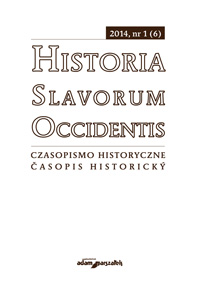Křesťanství u Germánů v Karpatské kotlině v 6. století
Christianity among Germanic tribes in the Carpathian Basin in the 6th sentry
Author(s): Peter BystrickýContributor(s): Agnieszka Tokarczuk (Translator)
Subject(s): Christian Theology and Religion, History, Middle Ages, Theology and Religion, 6th to 12th Centuries
Published by: Wydawnictwo Adam Marszałek
Keywords: Christianity;Germanic Tribes;Early Middle Ages;Carpathian Basin;
Summary/Abstract: The fourth century saw the beginning of spreading Christianity among Germanic people. The mission of bishop Ulfi las, however, ended in 348 and persecuted Christian Goths fled to the territory of the Roman Empire. After the destruction of Gothic kingdoms, the fleeing Goths were allowed by the Roman emperor Valens to cross the Danube, probably only on condition that they would adopt new faith. Since the emperor himself was an Arian and Arianism preferred theological teaching in the Roman Empire, the Goths, and later other East Germanic tribes, adopted this doctrine instead of Nicene Creed. Germanic people learned only the basic principles of faith and then just continued with their beliefs. Moreover, Jesus was deemed not the only God, but one of many gods. The second part of the study offers a survey of written sources on the Christianity among Germanic tribes in the Carpathian Basin in the sixth century – Rugians, Heruls, Gepids and Lombards. The Rugians led by the king Feletheus (Feva) and his Arian wife Giso dwelt on the left bank of the Danube, opposite the Roman province of Noricum, where at that time St. Severinus preached Christianity, established monasteries, organised defence or evacuation, redeemed captives, procured corn for the starving and healed the sick. Humble and pious Severinus won himself such a reputation that even barbarian kings respected him and listened to his advice and prophecies. The neighbouring Heruls, however, were pagans and sometimes invaded barely defended provinces of Noricum and Pannonia. Though their king received baptism in 528, many of them remained pagans and, according to Procopius, they were the wickedest people in the whole world. The Gepids, like Goths, converted to Arianism. The most significant traces of Gepid Christianity are found in the territory of Pannonia II, especially near the Roman town of Sirmium. Sirmium was one of the most important centres of early Christianity and in the late sixth century, the town having become a seat of Gepid Arian bishop. On the other hand, Lombard Arianism is very problematical. The first mention of their orthodox faith comes from Procopius. Paganism, however, was retained not only by the majority of the tribe, but also by the king and his retinue, even at the time 568 invasion in Italy. Arianism among Lombards probably gained strength only in Italy, where a number of subjugated Gepids accompanied them and where remnants of Arian Goths continued to live. From Alboin to Aripert (altogether 9 rulers) only two kings are mentioned as Arians and only two as Catholics. Though these Germanic tribes adopted Christianity in the Carpathian Basin, they did not stay there long enough to become true Christians. With Slavs and Avars replacing them, the Christianisation of Central Europe had to start from scratch.
Journal: Historia Slavorum Occidentis
- Issue Year: 2014
- Issue No: 1
- Page Range: 13-41
- Page Count: 29
- Language: Slovak

